Family : Plesiopidae

Text © Giuseppe Mazza

English translation by Mario Beltramini
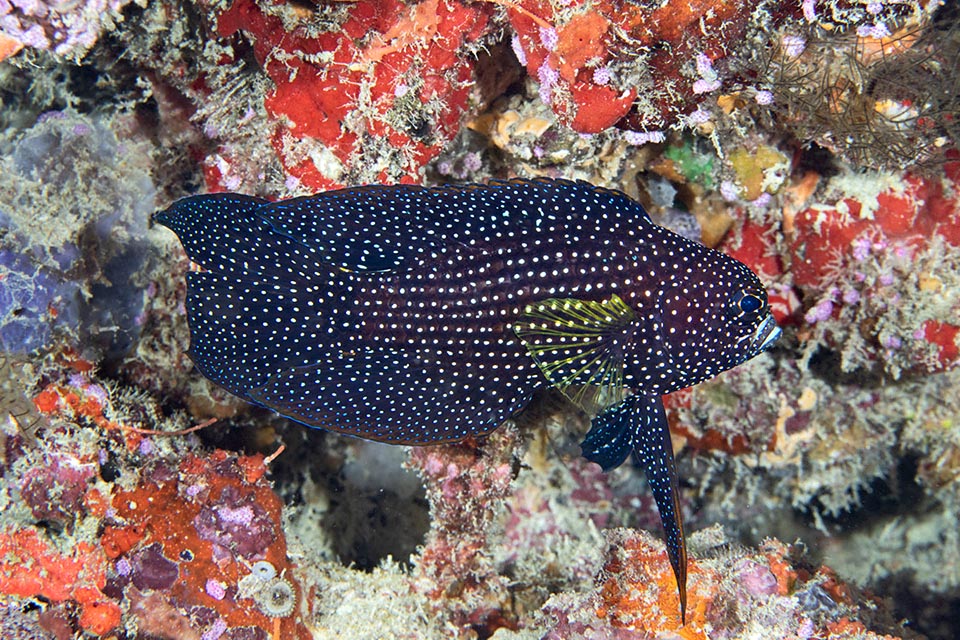
Very cautious and shy, the Comet fish (Calloplesiops altivelis) lives, perhaps with one only apparent discontinuity, in the tropical Indo-Pacific © Mark Rosenstein
The Comet (Calloplesiops altivelis Steindachner, 1903) belongs to the class of the Actinopterygii, the ray-finned fishes, to the order of belongs to the class of Perciformes and to the family of Plesiopidae which counts only 11 genera and 38 species, animals under many aspects similar to the Serranids, hence the Italian name of Comet grouper.
The name of the genus “calloplesiops” comes from the Greek “kállos” = beauty, “plesios” = near and from “opsis” = look, that is, a fish which closely embodies the concept of beauty.
Nevertheless, it could also be believed that it derives from “kállos” = beauty, and “plesiops”, the genus Plesiops hat belongs to the same family of the Plesiopidae.
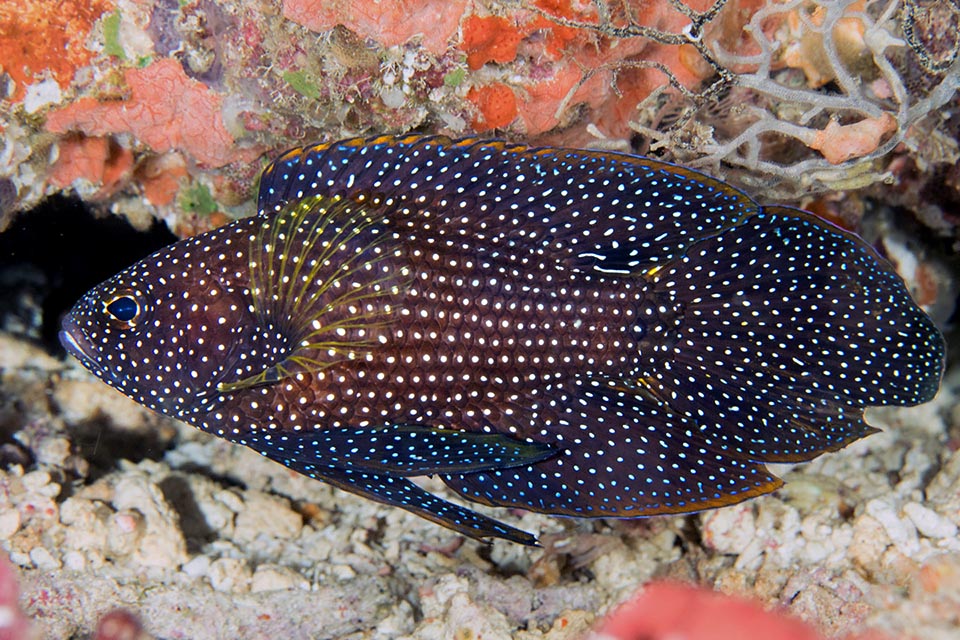
Effectively it’s not easy to be sighted, because measures less than 20 cm, long caudal fin included, and hides camouflaged in a den the whole day, hunting only by night © Mark Rosenstein
Plesiops was the first genus to be described by Oken in 1817, and from it derived the genera Paraplesiops (Bleeker,1875) = simmilar to Plesiops, Acanthoplesiops (Regan, 1912) = spiny Plesiops and our Calloplesiops (Fowler & Bean, 1930) which could be translated as beautiful Plesiops.
The name of the species “altivelis” comes from the Latin “altus” = tall and “veils” = sails, and therefore, “with tall sails” with an evident reference to the fins.
Zoogeography
It is present in the tropical waters of the Indian and Pacific oceans.
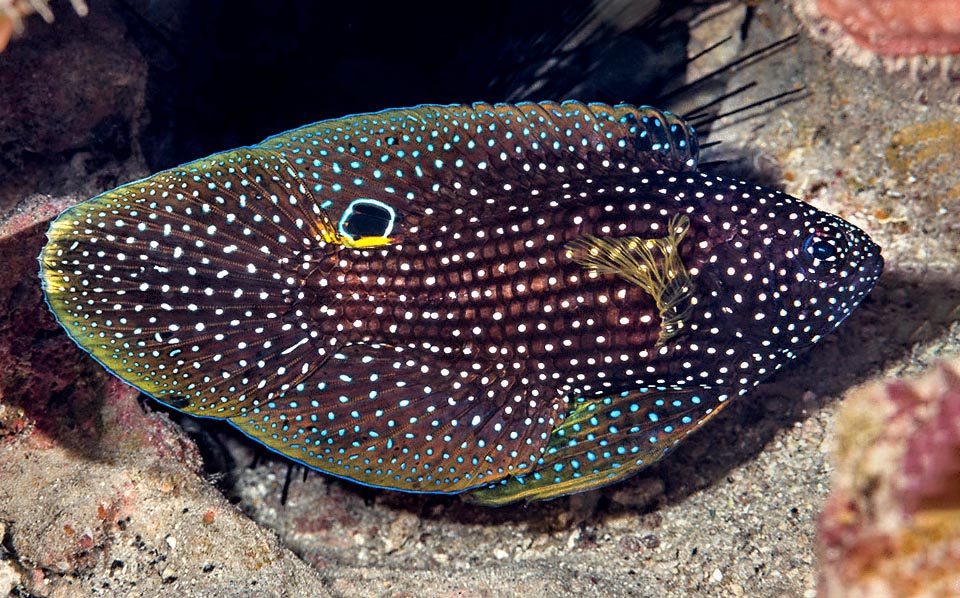
It is a carnivorous fish, a sort of mini grouper, that feeds mostly on small fishes and on small benthic crustaceans © François Libert
Indicatively, we find it from East Africa to the Red Sea, the Seychelles, and the Maldives, in the Chagos archipelago, at Christmas Island, in Australia, Indonesia New Guinea, Micronesia, Philippines, Taiwan, and China up to southern Japan. Eastwards, it is at home in Kiribati and Tuamotu. Southwards, it reaches Vanuatu, the Fiji Islands and Tonga. The distribution reveals areas of discontinuity, it is probably ampler because this is a small fish, wary and shy, and that hardly stumbles in the nets. It spends the whole day in a den and is active only during the night when, thanks to its mimetic patterns, is practically invisible.
Ecology-Habitat
It lives moving from one hiding place to another, between rocks and madrepores, up to 50 m of depth.
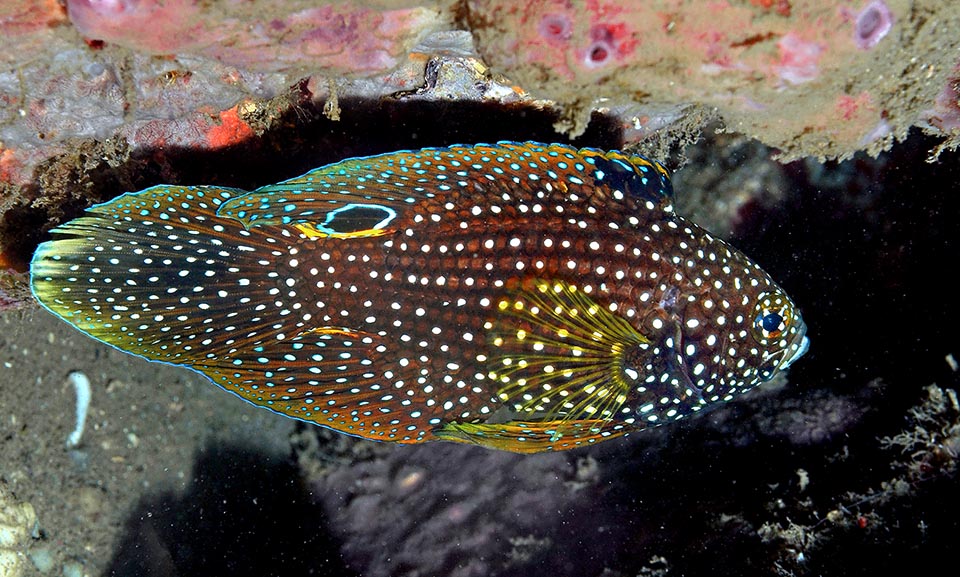
The females spawn 300-500 eggs, glued with fine threads to the substratum, and they stand watching for 5-6 days, until the hatch © Benoit Lallement
Morpho-physiology
The size of the body, compressed on the sides and doubled by the fins, does not exceed the 20 cm. The livery, almost black with brown reflections, is dotted with small white spots and drawings which, in the semidarkness mislead the predators.
Due to its shape, we do not know where the head and the tail are, and a false eye, drawn on the dorsal, evokes among the rocks the disturbing head of a moray eel in ambush, the Gymnothorax meleagris which has more or less the same drawing.
There is only one dorsal fin with 11 spiny rays and 8-10 unarmed, similar, but bigger than the anal which counts 3 spiny rays and 9 soft. The pectoral fins have 17-20 unarmed rays and the ventral ones are very elongated with 1 spine and 4 soft rays.
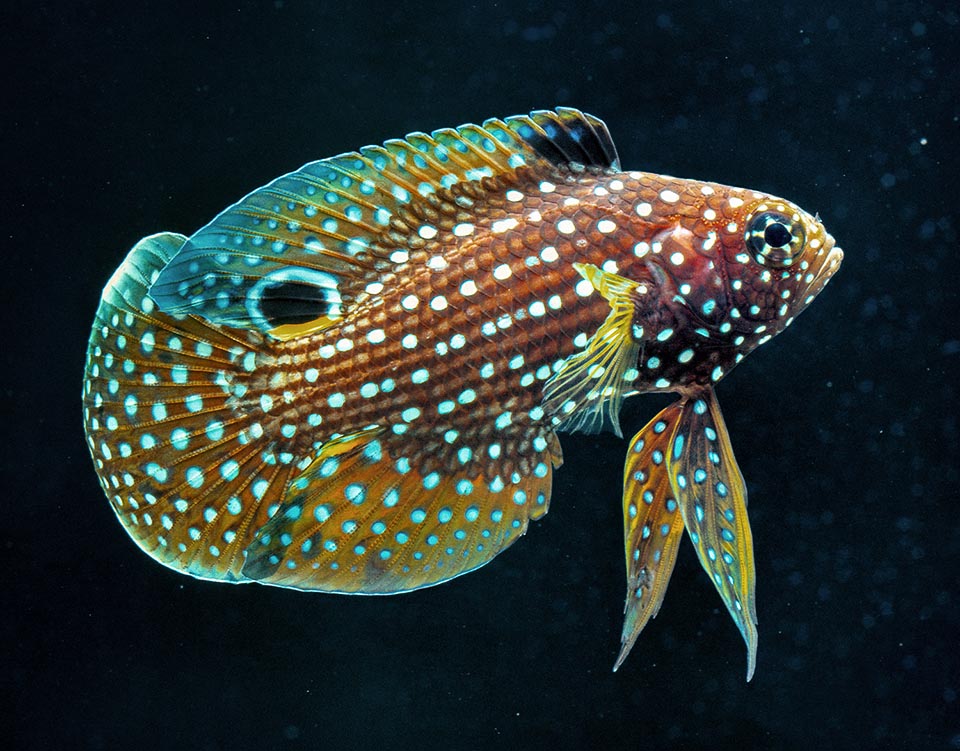
Beautiful, easy to feed and reproduce, it is at times bred and sold for the domestic aquaria under the name of Sea betta splendens due to a certain similarity in the fins © Giuseppe Mazza
The caudal, imposing and roundish, overlaps the posterior lobe of the anal and of the dorsal for a perfect continuity of the pattern. Even the iris is maculated and the eye results practically invisible. Blue halos often surround the white spots. The false eye near the tail shows below an orange small bar, present in a specular way also on the anal fin; colour found also on the pectoral and the edge of the ventral ones. The mouth is moderately protractile, with small sharp teeth on the jaws and some palatine teeth and on the vomer.
Ethology-Reproductive Biology
In its small way, the comet follows like the true groupers a carnivorous diet, predating crustaceans and small fishes. It is not a problem to nourish it in aquarium, but apart the splendid livery it’s a fish giving scarce satisfactions because it hides during the day and shy as it is, in a cramped environment, is likely to be continuously stressed by the other guests, ready to steal the food from its mouth.
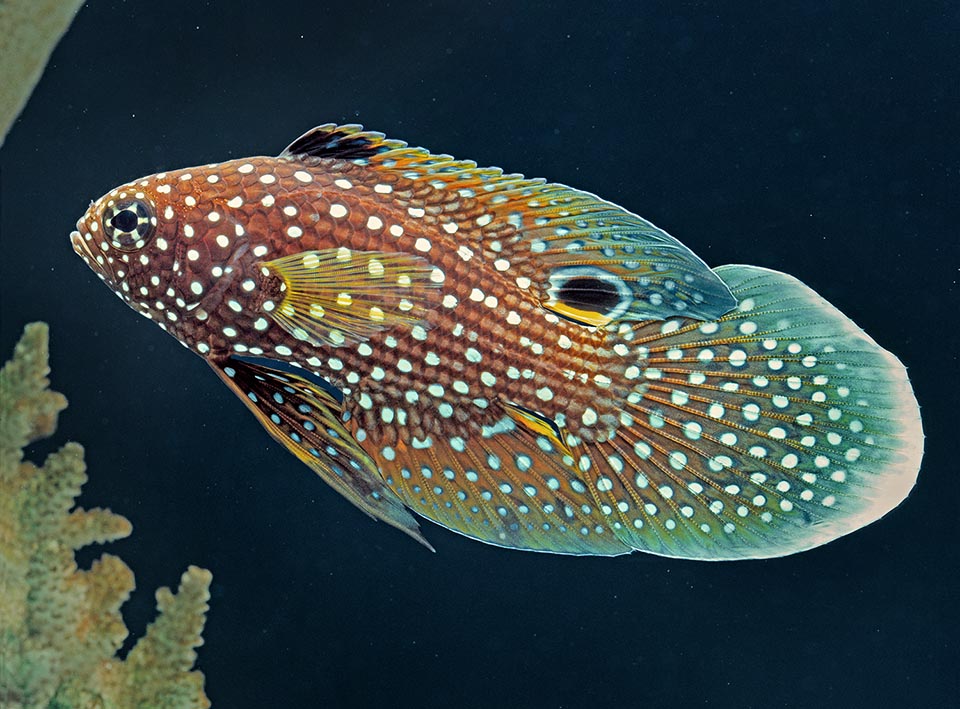
But it is not a greatly satisfying fish because it stays hidden during the whole day and exits from the den only when its masters sleep © Giuseppe Mazza
The females spawn 300-500 eggs, stuck with adhesive threads to the substratum and keep the watch near the nest. The eggs hatch in 5-6 days at about 26 °C.
Calloplesiops altivelis reproduces pretty easily in captivity where it can live even a decade. It should be too expensive to fish it and the specimens of the trade come usually, therefore, from farms. In the wild, populations can double in 1.4-4.4 years. The fishing vulnerability index is very low, scoring just 10 on a scale of 100.
Synonyms
Barrosia barrosi Smith, 1952; Callopresiops altivelis Steindachner, 1903; Plesiops altivelis Steindachner, 1903.
→ For general information about FISH please click here.
→ For general information about BONY FISH please click here
→ For general information about CARTILAGINOUS FISH please click here.
→ To appreciate the BIODIVERSITY of BONY FISH please click here.
→ To appreciate the BIODIVERSITY of CARTILAGINOUS FISH please click here.
